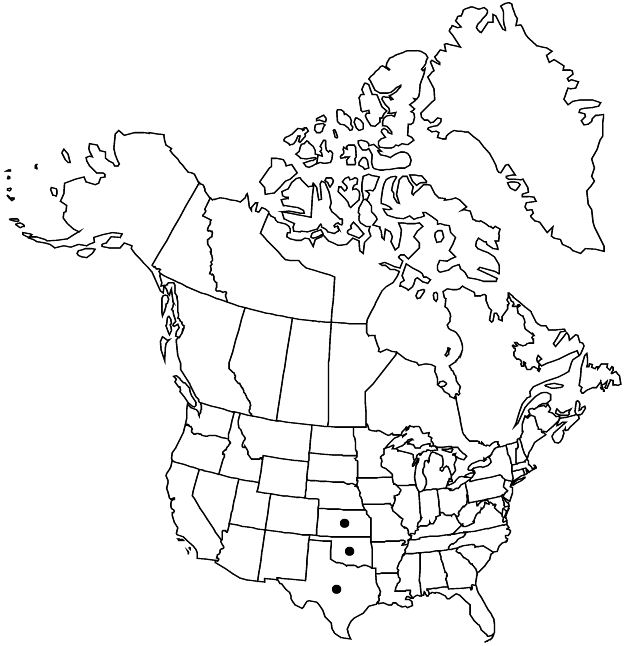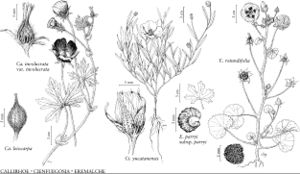Callirhoë leiocarpa
J. Wash. Acad. Sci. 28: 108. 1938.
Plants annual, sometimes biennial. Stems 1–7(–10), erect to weakly erect, 0.5–10(–12) dm, glabrous or sparingly hairy, hairs 4-rayed, stellate, somewhat glaucous. Leaves: stipules persistent, strongly auriculate, 4–8(–12) mm; petiole 0.7–8(–12) cm; blade suborbiculate, reniform-cordate, or ovate, shallowly to deeply 3–7-lobed, 1–7(–9) × 1–9.5 cm, surfaces sparingly hairy, hairs 4-rayed, stellate, and simple abaxially, mostly simple adaxially, lobes oblanceolate. Inflorescences racemose; involucellar bractlets absent. Flowers bisexual or functionally pistillate; calyx lobes valvate in bud, forming apiculate or acuminate point; petals reddish purple with white basal spot, 1.5–2.3(–3.5) cm (male sterile 1.1–1.6 cm). Schizocarps 5.5–7 mm diam.; mericarps 10–14, 2.8–4.5 × 1.5–2.7 mm, glabrous, dehiscent; beaks prominent, 1–2 mm; collars well developed, 3-lobed. 2n = 28.
Phenology: Flowering (late winter–)spring–mid summer, sporadically later.
Habitat: Prairies, mesquite-juniper woodlands, borders of woods and thickets
Elevation: 0–1000 m
Distribution

Kans., Okla., Tex.
Discussion
Callirhoë leiocarpa has been confused with C. pedata by some authors. It is cultivated occasionally.
Selected References
None.
